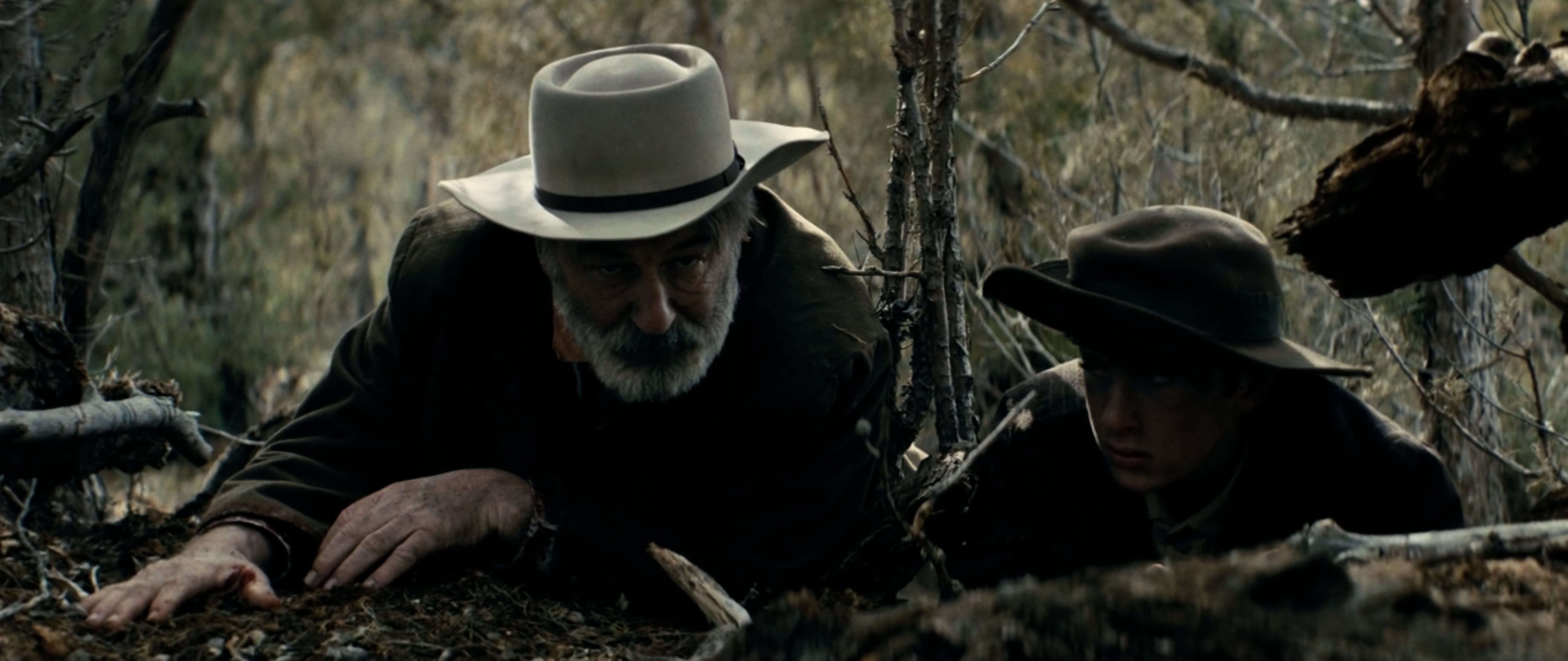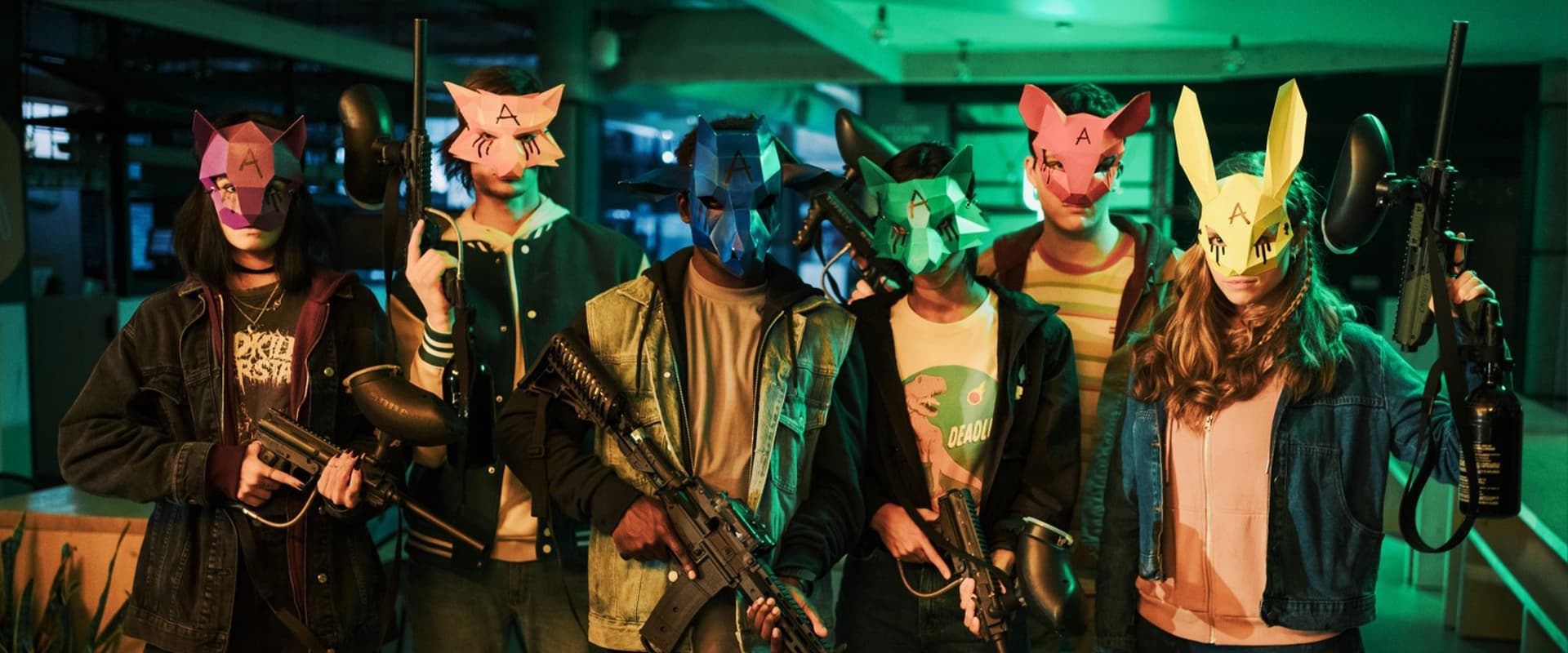Of all the ways an already mediocre American Western might earn its place in the history books, Rust, Joel Souza’s 2024 genre exercise, had the misfortune of being immortalized by catastrophe rather than by the merits it so earnestly (and so transparently) seeks. Released under a pall as heavy as Wyoming’s own lowering skies, Rust cannot be written about, really, in isolation; the fatal shadow of Halyna Hutchins’ death seeps into every frame, blurring what might have been a straight-plodding piece of entertainment into a cultural memento mori.
But what is the movie itself, this would-be throwback to the American mythos? Rust is a parade of Western cliches, dutifully reenacted by a cast straining for gravitas across haunted scrublands. The plot, such as it is, musters the orphaned Lucas, stuck with wide-eyed trauma, and the weary outlaw-turned-grandfather Harland Rust (Alec Baldwin, heavy with a kind of exhausted self-awareness), as they trudge through the genre’s already parade-worn motifs: the chase, the standoff, the attempt at rescue, the tortured round of moral hand-wringing. There’s a perfunctory roster of bounty hunters and lawmen, as interchangeable as the store-bought dusters they wear. The film approaches its character development with the same determination as someone dusting a museum exhibit, content to let the archetypes do half the work, except here, they don’t.
Lucas, played with a sort of earnest, clean-scrubbed passivity by Patrick Scott McDermott, is less an individual than a vessel onto which we’re supposed to project residual feelings about innocence lost and the costs of violence. Harland, meanwhile, is meant to be the Man With a Dark Past, now roped into one last shot at redemption; Baldwin turns up the stoicism, but the writing offers him only polemics about fate while the film grinds toward the obligatory tragic shootout. Rust is too well-mannered to actually channel the fever or squalor of frontier justice; it’s less Unforgiven than Unremarkable, content to let dull resignation take the place of drama.
The movie wants deeply to be "about" something, innocence, legacy, the passing of wise brutality from one generation to the next, but what it’s actually about is its own inability to move beyond the Western’s most taxidermied devices. The shadow of the actual catastrophe off-screen dwarfs the on-screen moral wrestling, leaving the movie’s intended gravity looking like a child’s attempt to wear his father’s boots.
Yet, if there is artistry here, it’s in the look, not the drama. The landscapes, captured by Hutchins’ tragically final effort, are indeed painterly: elegiac valleys, wind-strafed horizons, the soft golds and hard blue shadows of a West that always photographs better than it speaks. Every critic has, and will, note the cinematographic splendor, the classical compositions, the silhouette work that manages, in brief flashes, to evoke Leone or Ford. It’s tempting, for a moment, to be swept up by the visuals: the meditative scope of the land, the costuming, the smell of old wood and gun oil conjured in flickers. But the images themselves, however beautiful, are now scored and hollowed by knowledge of the on-set disaster. The camera’s eye seems to be searching, posthumously, for a meaning the script cannot muster.
Stylistically, Rust borrows its action-language from the Italian Western’s golden age, close-ups, frantic edits, and those famous, balletic gunfights. But where Leone could make violence mythic and strange, Souza’s film confuses frantic for exciting; the result is sometimes spatially chaotic, sometimes just numbing. And always, behind the choreography, there is the impossible thought: someone died for this. How do you suspend disbelief when the disbelief keeps knocking at the door?
The supporting cast blurs together, never rising above the status of archetype: not a fresh angle among them. The film’s running time drags, its dramatic pauses and gunmetal silences meant, presumably, as gravitas but registering mostly as narrative inertia. The final exchange of bullets is neither cathartic nor shocking; it just checks off the box we saw coming a mile away, the result of a film so locked into formula, even its attempts at solemnity are telegraphed and drained of vitality.
If the story is thin and the direction unremarkable, the film’s contradictions (aesthetic beauty paired with emotional vacancy) are only thrown into sharper relief by the reality of Hutchins’ death. Every shadow, every shaft of Wyoming light now glimmers with unintended accusation. What are we to make of a film in which the only vital spark comes from the tragedy that overshadows it, a film now pickled in a brine of ethical unease, morbid fascination, and professional failure?
There are, of course, technical achievements worth nodding at (the post-production reshuffling is nearly seamless, speaking to an engineering competence that deserves, perhaps, a more substantial project), but the soul of the film remains marred. Rust is a showcase of lost opportunity: a visual feast in service of narrative famine.
In the end, Rust is not so much a movie as a monument. Its claim to significance is not the limp pile of genre tropes it offers with so much solemn intent, nor its creaky attempts at profundity. Its significance is a tragic footnote, a cautionary tale about the permanence of carelessness. As for the emotional resonance, the film leaves us not stirred or troubled, but merely hollow, another gravestone on the highway of American myth-making. Hollywood, at its worst, has always been able to turn calamity into spectacle, but Rust never even achieves that. It’s just a sad, beautifully-filmed nothing, and something much, much worse.


